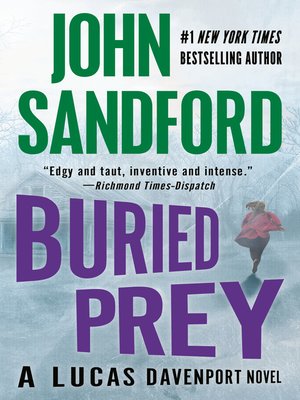
But when the killer commits a particularly brazen and atrocious crime in the present day, the pace picks up as Lucas vows to execute his quarry personally. Much of his two investigations, past and present, amount to a slog, a procedural daisy chain of information that leads to more information, much of it unreliable. It’s not until 25 years later, when a construction crew finds the two girls’ bodies, that Lucas has a chance to reopen it. When a manhunt leaves Scrape dead, Daniel closes the case over Lucas’s protests. Quentin Daniel, who’s running the Jones case, that his killer is schizophrenic panhandler Terry Scrape. Meanwhile, a series of anonymous tips and circumstantial clues convince Lt. Along the way, he manages to solve the fatal stabbing of Ronald Rice more or less on the fly.

For his trouble, he’s shunted off the case onto the infinitely more routine murder of gangbanger Billy Smith.

When the need to follow every lead drags Lucas Davenport, the beat cop who first caught the call, into a very temporary assignment as a plainclothes homicide detective, he immediately shows the sleuthing instincts that will make him a star ( Storm Prey, 2010, etc.). There’s no proof at the time that the Jones girls are dead, only a plea from George and Gloria Jones to find them after they went missing, along with a raft of evidence that all points in one direction. A macabre discovery at a demolition site sends Lucas Davenport back to 1985, and his very first homicide.


 0 kommentar(er)
0 kommentar(er)
